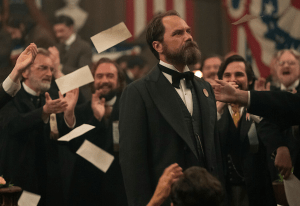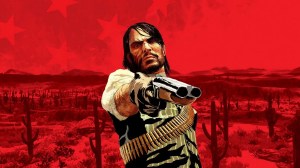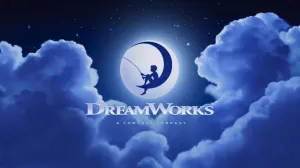Indie action-comedy Welcome To Acapulco hit streaming video services last week, starring Michael Kingsbaker and a number of recognizable actors including William Baldwin, Paul Sorvino, and Sin City‘s Michael Madsen. The movie is something that came together like a whirlwind, and filmmaker Guillermo Ivan describes the whole thing coming together in a matter of months. It has elements of genre touchstones like Die Hard (the everyday guy out of his depth in a crazy plot) and Get Shorty (high action and high humor).
Videos by ComicBook.com
In the film, video game designer Matt Booth has one shot to save his career by unveiling his biggest project yet at the Video Game Awards in New Mexico. But after running into a friend at the airport and having a little too much to drink before his flight, he ends up in ACTUAL Mexico – specifically, Acapulco. As soon as he lands, he finds himself on the run from high-powered criminals, deadly hitmen, and the Feds, all looking for a mysterious package that he has allegedly smuggled through customs yet knows nothing about.
Ivan joined ComicBook.com last week to discuss the movie, which is available now via streaming video on demand services.
I wanted to ask, right up top, about casting the film. There are a handful of familiar faces in Welcome to Acapulco, but star Michael Kingsbaker is not one of them.
Welcome to Acapulco was a very organic process in every single sense. When we were developing the idea, the project, the way we found the location, found the cast, found the crew members, it was very organic. I was just having a conversation about that, and I was explaining to somebody that everything happened in like five months. From the conception of the idea to being on set, actually doing pre-production on set and then shooting. So the cast was very organic. Y es, we wanted to have somebody with the heaviness of Michael Madsen, Paul Sorvino, Ana Serradilla, Michael Madsen. Why not? We also were looking for the right talent to open new opportunities and new possibilities as well, and that was the way we found Mike Kingsbaker and ask him that he be the lead.
It almost feels like a throwback kind of action movie — something that could have been done 25 years ago and feel mostly at home.
It’s so interesting that you’re saying this because, if you think of Acapulco for instance, Acapulco represents that glamorous life of back in the 70s and 80s, so you’re so right about that. We wanted to envelop the film with this vintage element, with this old-fashioned idea of wealth. But also, we wanted to combine that with new elements, like the virtual world, the gaming world. And that’s what was, in my opinion, what was really fun when we were doing the development of the project and then pre-production of the project.
We all wanted to take the risk of combining Matt Booth’s world, which is basically designing all this virtual reality, and weave the heavy, dangerous reality that he is not even aware of. That was the path that we decided to take. So yes, to answer your question, there are a lot of vintage elements from the 70s and 80s when the movie does go to Acapulco. I don’t know if you’ve been to Acapulco, but Acapulco has this kind of vintage mojo, so to speak. If you walk through the streets, it’s like being back in 70s. My favorite hotel in Acapulco is La Brisa, ’cause it’s all pink. You feel trapped in the glamorous life of the 70s, so that’s the way it is.
You also have a role in the film. Was it tough, sometimes, to take a movie that is so infused with your personality and to hand off to somebody else to direct your scenes?
Yeah. It is always tough, however — and I always talk about this — we had a great team in place. I believe in teamwork and I believe that a movie does not belong to just one person, but it really does belong to everybody who’s involved. Your mission as director, it’s only portraying that movie in the imagination of everybody, so everybody can foresee the same thing you’re seeing. Then you just have to let them go and do whatever they have to do, so that was exactly what we were doing.
We spent a lot of time in pre-production working with everybody. We wanted to make sure that we all were seeing the same picture, and then everybody was just doing their job. It really made that easy. It’s always tough, but it wasn’t that tough. And we were in Acapulco, so certainly Acapulco made everything easier.
Was Acapulco always baked into the identity of this film? Was it something where you wanted to shoot there? Or was that a matter of something that became a bigger part of it once you knew where you were filming?
Well, to be honest with you Acapulco has always been a very special place in my life. I gotta tell you a story. When I was like, five, six years old, my parents had their honeymoon, and they went to Acapulco. I remember seeing that image in front of me for the first time ever. Back in time, to get to Acapulco from Mexico city, I was born in Mexico City, so to go to Acapulco, you have to spend like, seven hours drive. You were driving in this road that was going around a mountain, and then suddenly you have the beauty of the ocean in front of the view, and I will never forget that image.
I came back many, many times, and I always remembered that even though Acapulco is a paradise, the best thing of that paradise was people from Acapulco. They were so nice, always. I wanted to do something in Acapulco, as somebody who was born and raised in Mexico obviously, I wanted to do something down there that would represent something to me. Having the opportunity of bringing such an amazing talent like Paul Sorvino, Mike Madsen, Baldwin, and all the amazing cast and crew that we have down to Acapulco in combination with all the Mexican talent that we had, it was just a dream come true.
You talked about this a little bit, but how much fun was it for you visually, juxtaposing an older or vintage look with what Matt does and what Matt’s whole life is, which is essentially the next generation and the future?
Yeah, that was, to me, the biggest deal. That was exactly what I wanted to do, and what we wanted to do. It was a risk, we’re taking a risk with that because it’s not easy combining both worlds. However, I believe that the story itself is leading or it was leading us to that place. If you think about it, there’s a cultural dislocation, rather. It’s not just a cultural dislocation, but it’s also a 100% dislocation between Matt Booth and the concept. Matt Booth was heading to a different destination, he ends up in Acapulco. He was heading to the future, he goes back to the past, if you think about it.
He was heading to a video game convention, and he’s going back to a place that has this vintage, old fashioned, glamorous vibe. So, he’s out of context, but still his interpretation of the world is endowed with all these gaming elements, and that’s the way he perceives everything. By the way, the comic and so to speak, the comedian element on the movie as well, because he does not belong to this dangerous world that he’s facing in the movie.
He belongs to a 9 to 5 job, designing video games. He goes to this place, which is a beautiful, vintage paradise full of people, dangerous people, chasing him all the time. The juxtaposition of those two elements is justified just by the situation itself.








